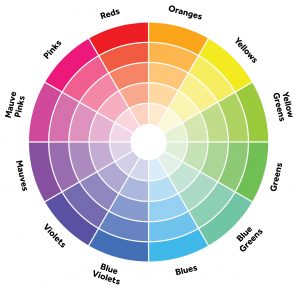Do you want a home that looks effortlessly pulled together? One like you see in your favorite decorating magazines in which the colors seem to mix perfectly? Those interiors that look so effortless probably took a good bit of planning, most likely by a professional decorator. If you’re struggling to hit the right combination and balance of color in a space, you might consider borrowing a few tricks from the professionals!
Using a Color Wheel

Chances are you haven’t taken a good long look at a color wheel since you were in grade school, but every trained decorator is familiar with it. Referencing a color wheel is an easy way to come up with fantastic color combinations. There are an almost endless variety of ways you can combine colors, but today we’ll look at three common ways to use a color wheel to develop a color scheme.
Pick A Single Color
Whether you want to celebrate your favorite color or just like the calmer feeling a monochromatic color scheme provides, working with a single color is one of the simplest ways to approach decorating a space. You need not use the exact same color on every surface or piece of furniture either. Exploring variations of tint, shade, and tone in your color of choice is a great way to add visual interest to a monochromatic room.
Look To The Left & Right
To create an analogous color scheme pair your color of choice with the ones on either side of it. Rooms done in this style can still be lively when bold colors are used but tend to feel calmer since the colors are similar to one another.
Complementary Colors
Complementary colors are direct opposites on the color wheel. When you decorate a room with this sort of color scheme you get the most contrast between color, which can make for an exciting and lively space.
Working With Your Color Scheme
The one thing you should avoid when picking a color scheme is the feeling that every single item in your room must be one of those colors. Neutrals, like white, black, or wood tones, will almost certainly be apart of every room in your home and are a great way to control the quantity of color you use. If you’re color shy but would like to experiment with using higher contrast colors, decorating a room primarily with neutrals and adding splashes of color here and there might be the perfect way for you to give a complementary color scheme a try.



